
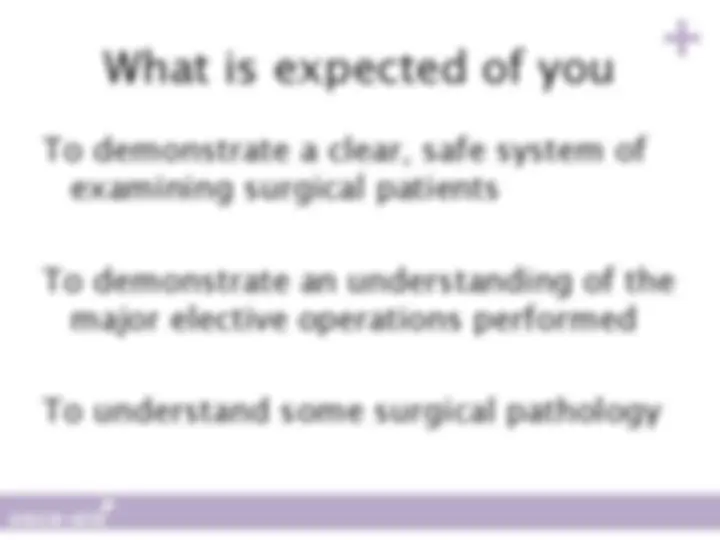
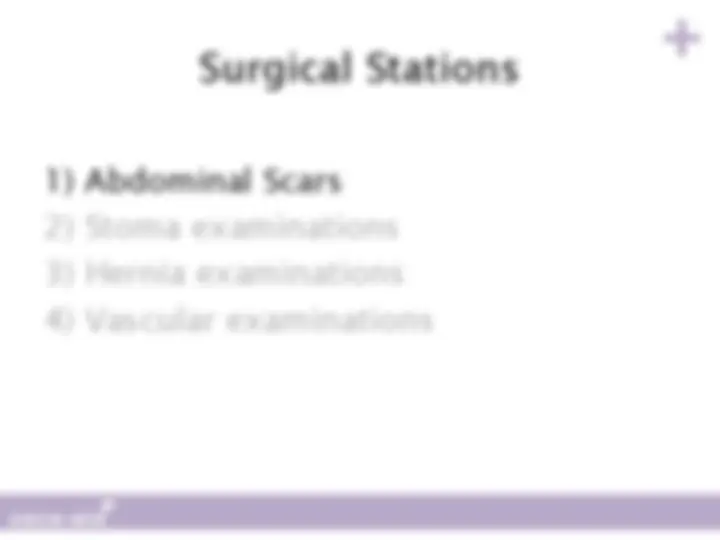
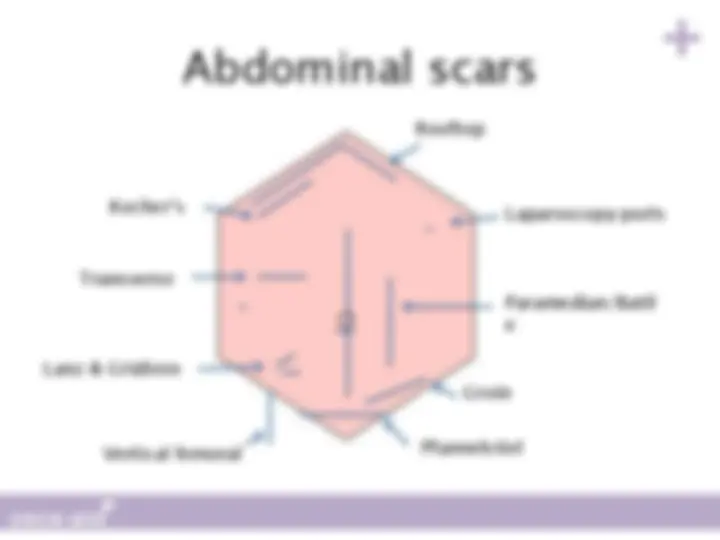
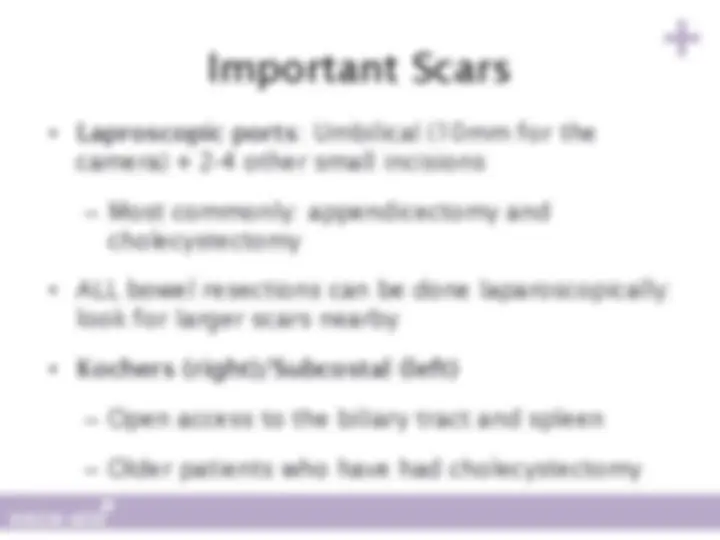
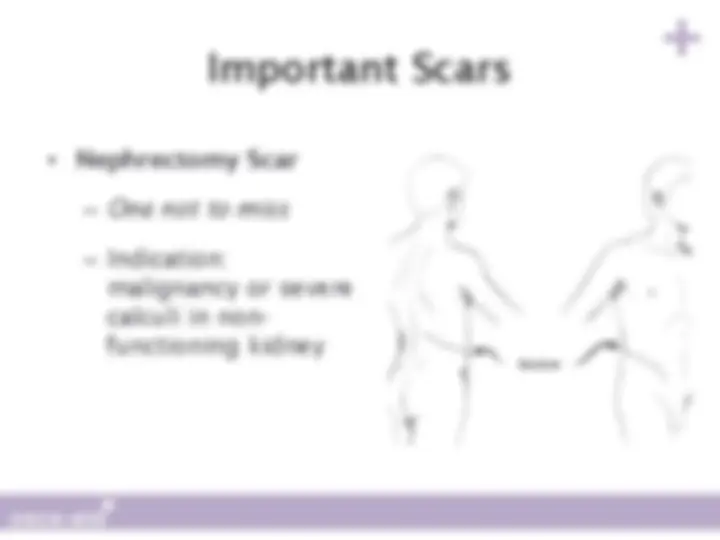

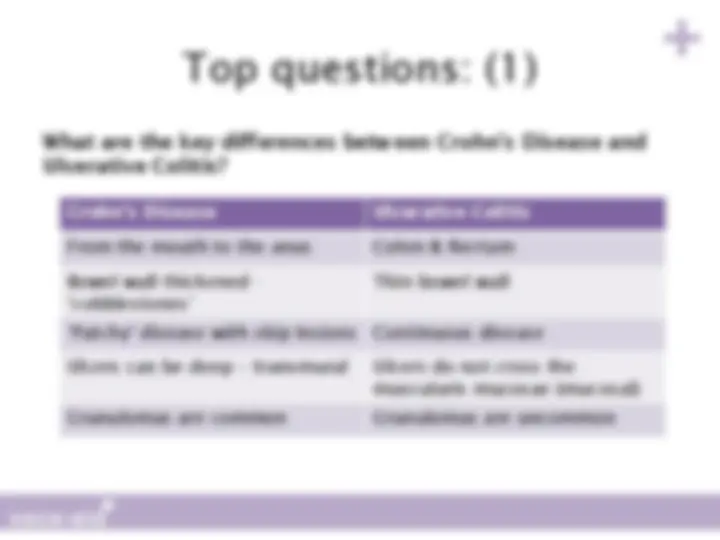

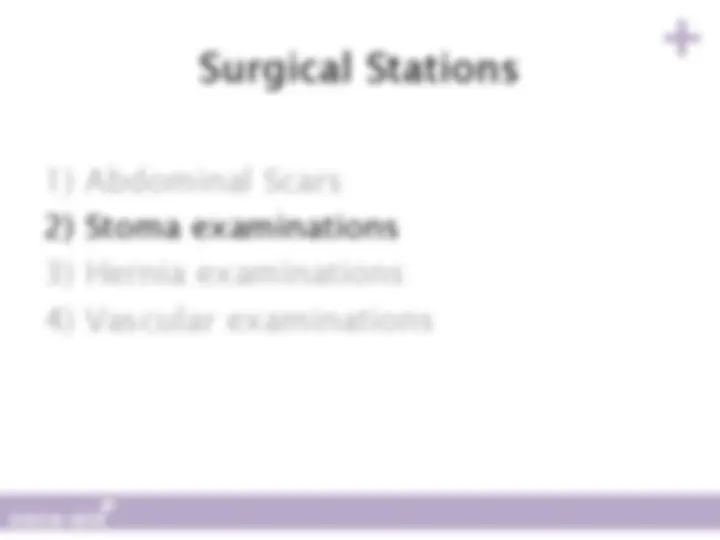

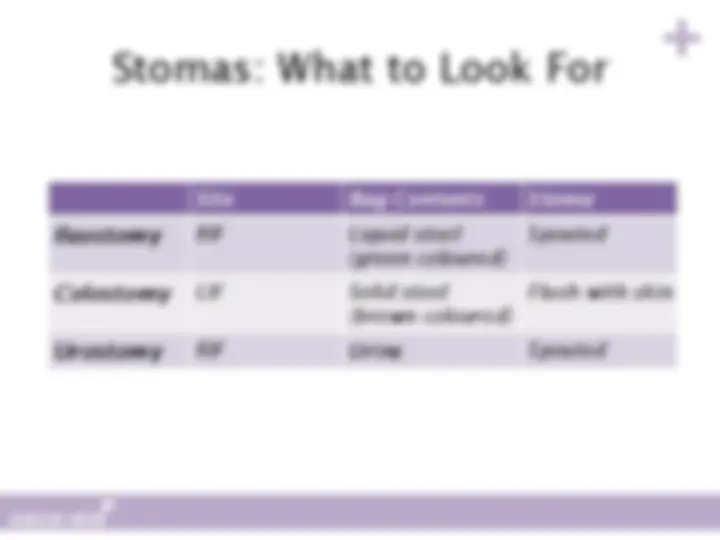


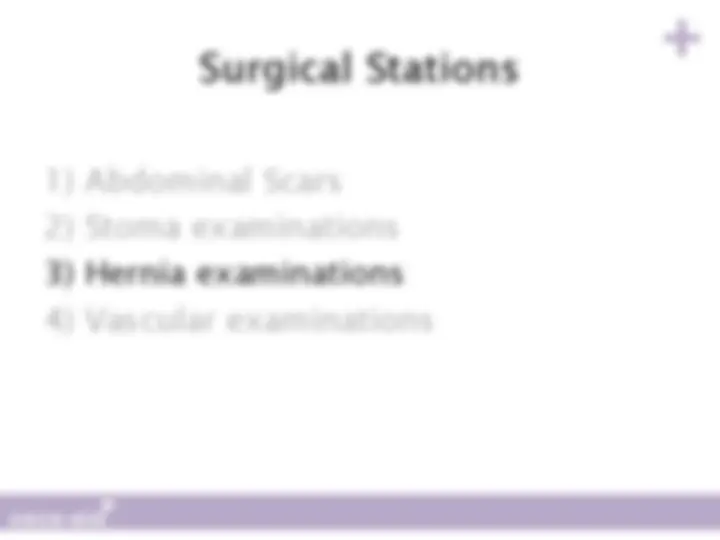

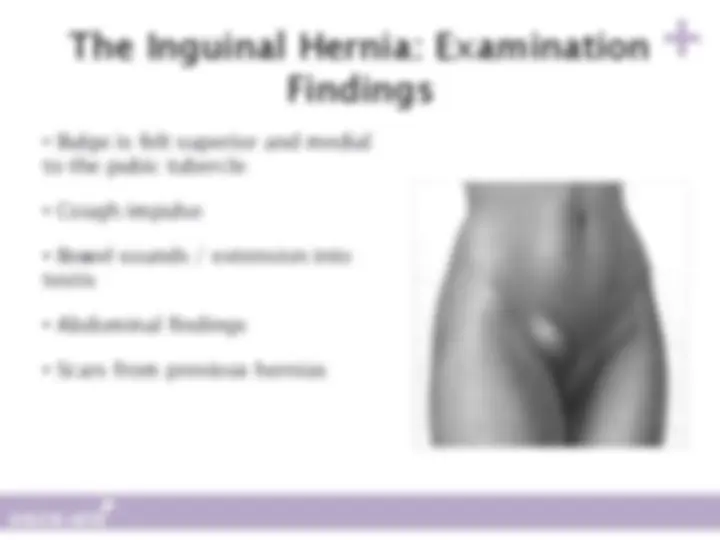







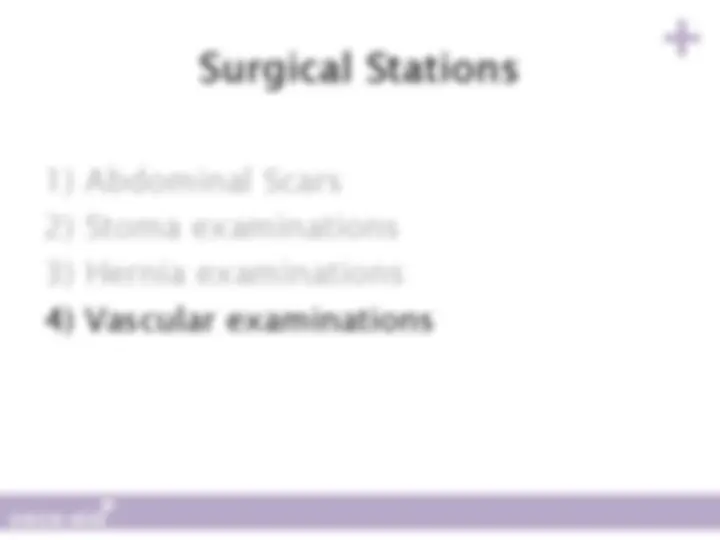

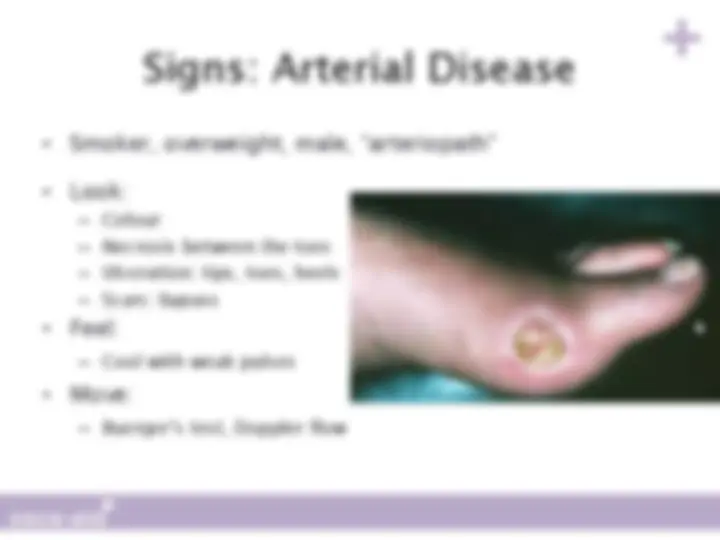
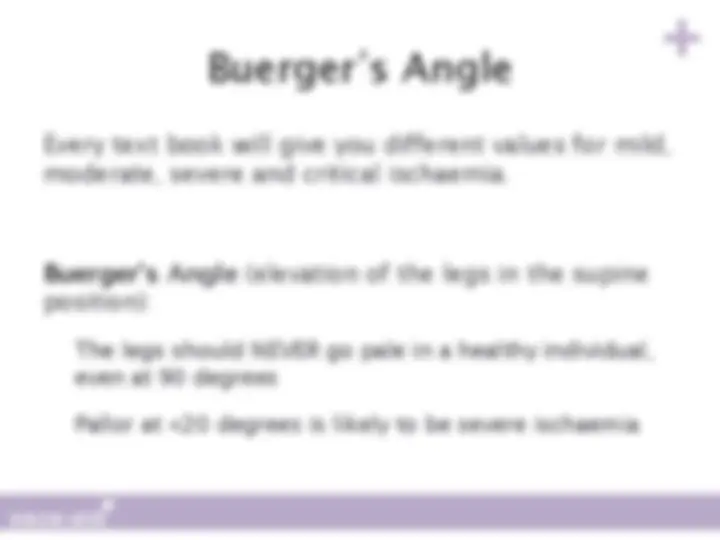





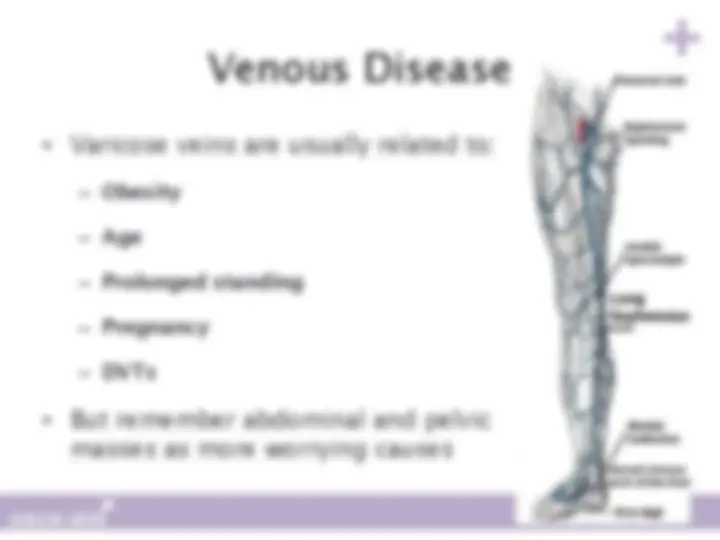







Study with the several resources on Docsity

Earn points by helping other students or get them with a premium plan


Prepare for your exams
Study with the several resources on Docsity

Earn points to download
Earn points by helping other students or get them with a premium plan
Community
Ask the community for help and clear up your study doubts
Discover the best universities in your country according to Docsity users
Free resources
Download our free guides on studying techniques, anxiety management strategies, and thesis advice from Docsity tutors
An overview of common cases in surgery, focusing on abdominal scars, stoma examinations, and hernia examinations. It covers key scars, signs of specific diseases like Crohn's, and what to look for during stoma and hernia examinations. Students preparing for medical exams will find this information helpful.
What you will learn
Typology: Lecture notes
1 / 46

This page cannot be seen from the preview
Don't miss anything!







































Common Cases: Surgery and Vascular
Surgical Stations
Rooftop Kocher’s Transverse Lanz & Gridiron Vertical femoral Pfannelstiel Groin Paramedian/Battl e Laparoscopy ports
Important Scars
Important Scars
Likely Cases: Crohn’s
Likely Cases: Crohn’s
Top questions: (1) What are the key differences between Crohn’s Disease and Ulcerative Colitis? Crohn’s Disease Ulcerative Colitis From the mouth to the anus Colon & Rectum Bowel wall thickened - ‘cobblestones’ Thin bowel wall ‘Patchy’ disease with skip lesions Continuous disease Ulcers can be deep – transmural Ulcers do not cross the muscularis mucosae (mucosal) Granulomas are common Granulomas are uncommon
Top questions: (2) What are the indications for surgery in Inflammatory Bowel Disease?
Stomas: What to Look For The Stoma
Stomas: What to Look For The contents of the bag (if clear)
Stomas: What to Look For Site Bag Contents Stoma Ileostomy RIF^ Liquid stool (green coloured) Spouted Colostomy LIF^ Solid stool (brown coloured) Flush with skin Urostomy RIF^ Urine^ Spouted
Present your findings: “I examined this gentleman’s stoma. It is situated in the right lower quadrant of the abdomen together with a midline laprotomy scar. There is a marked parastomal hernia but no surrounding cellulitis. The surrounding abdomen is soft. The stoma is raised from the skin and stoma bag contains liquid stool only. This is likely to be an ileostomy. To complete my examination, I would examine the perineum and perform a digital examination of the stoma.”